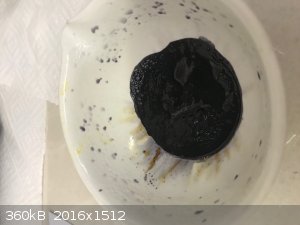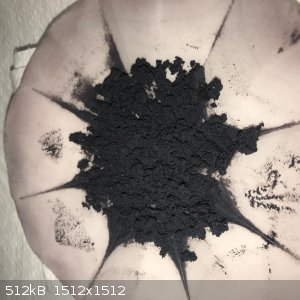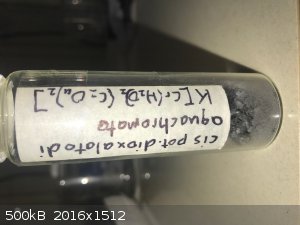potassium dioxalatodiaquachromate(iii) report
The source of the below copied text is "Practical Inorganic Chemistry Preparations, reactions and instrumental methods" by Geoffrey Pass, page 94.
Extract copied below - seems the text recognition messed up in a few places:
"cis- and trans-potassium dioxalatodiaquachromate(lIl)
(a) The trans isomer, K[Cr(C20 4)2(H20h]3H20
Dissolve oxalic acid dihydrate (12 g) in the minimum amount of
boiling water. It is advisable to use a beaker of not less than 300 cm3
capacity, since the ensuing reaction is rather vigorous. Add, in small
portions, a solution of potassium dichromate (4 g) dissolved in the
minimum quantity of hot water, covering the beaker while the violent
reaction proceeds. Evaporate the solution to about one half of its
original bulk and then allow spontaneous evaporation at room
temperature to proceed until the solution is reduced to about one
third of its original bulk. Filter off the crystals, wash with cold water,
and alcohol. Record the yield, and express this as a percentage based
on chromium. A high yield cannot be expected since only a part of
the product is isolated.
Note that in solution there is an equilibrium between the cis- and
trans-isomers, but the low solubility of the trans isomer results in its
initial deposition. Excessive spontaneous evaporation should be
avoided otherwise the product may become contaminated with the
cis isomer.
(b) The cis isomer, K[Cr(C20 4)Z{HzOh]2HzO
Materials required: as in (a) plus ethanol.
Prepare an intimate mixture of finely ground potassium dichromate
(4 g) and oxalic acid dihydrate (12 g) and heap the powder in a 15 cm
diameter evaporating dish. Place one drop of water in a small
depression in the mixture and cover the dish with a watch glass.
Mter a short induction period the reaction commences and soon
becomes vigorous with the evolution of steam and carbon dioxide.
A solution of the product is avoided, and hence an equilibrium
mixture of cis- and trans-isomers is not formed.
The product of this reaction is a purple viscous liquid over which
is poured 20 cm3 of ethanol and the mixture stirred until the product
of the reaction solidifies. If solidification is slow, decant the liquid
and repeat the process with a second portion of alcohol until the
product is entirely crystalline. Filter, dry at the pump, and record
the yield"
I attempted the (b) part, the cis isomer.
- 3g potassium dichromate was ground to a fine powder.
- 9g oxalic acid (I think the dihydrate) was ground to a fine powder.
- The 2 compounds were transferred to a flat bottom plastic dish and mixed by moving the dish to have the powders slide through each other.
- Once mixed the contents was transferred to a 10cm evaporating dish.
The above was done in my shed. The plan was to now proceed outside into the garden, to add the initiating drop of water as called for in the quoted
procedure. But in this climate of high humidity and near 40C in my shed this never happened....
- Noticed the mixture started to change to a more brown colour almost immediately after being poured into the dish. Then the reaction started before
any water was added; it was gentle enough that I could put the watch glass on top.
- The mixture bubbled and steamed for a minute or so and after that a dark liquid was left, which looked purple when spread thinly. It still bubbled
gently for another 5 minutes or so. This was the result:

- Once cool (it never got very hot) added 30ml methanol (I do not have ethanol, as called for) and stirred with a glass rod. This soon got the product
to a chewing gum consistency. This was then transferred to a small beaker and stirred with 50ml methanol with a magnetic bar for 10 minutes.
- The mixture was then filtered. The filtrate was a dark purple, and the remainder a fine dark powder.

- The remainder was air-dried for 2 hours. It dried, the methanol evaporated quickly, but then seemed to be getting wet along the edge of the pile.
The dry material was then bottled; 3.5g was recovered.

Color grey-black. It is very soluble in water giving a dark dirty purple color. Concentrated hydrochloric acid dissolves it, also giving a dark
solution, but much slower than water.
|